In today’s world, the safety of vehicles and drivers on the road is more crucial than ever. Whether you’re managing a fleet of cargo trucks, running a bus service, or simply driving your car, the risk of sudden attacks or vandalism is a real concern. From physical damage to theft and even cyber threats, these dangers can lead to financial losses, operational disruptions, and, most importantly, put lives at risk.
Fortunately, BongoIoT offers powerful tools to protect vehicles and drivers from these threats. By integrating AI cameras, GPS devices, E-locks, and digital maps into your security strategy, you can create a robust system that not only deters potential attackers but also provides quick response options when needed. In this blog, we’ll explore the various threats on the road and how these technologies can safeguard your vehicles and drivers.
Understanding the Threats
1. Physical Vandalism
Physical vandalism is one of the most common forms of vehicle damage. It includes acts like keying (scratching the surface of the vehicle), breaking windows, slashing tires, spray painting or graffiti, and throwing objects at vehicles. These acts not only cause physical damage but can also obscure important vehicle information or create hazardous situations, especially if the vehicle is moving.
2. Theft of Parts
Certain vehicle parts are valuable targets for thieves, including catalytic converters, batteries, mirrors, and lights. These parts can be easily removed and sold, leading to significant financial losses and operational downtime, particularly for commercial vehicles.
3. Hijacking
Hijacking involves the forceful theft of a vehicle or its cargo. This can be especially dangerous for cargo trucks carrying valuable goods. In some cases, hijackers may force the driver out or even harm them to steal the vehicle or its contents.
4. Roadside Assault
Criminals may force vehicles to stop in isolated areas to rob passengers or drivers, kidnap them, or physically assault them. Such incidents are particularly concerning in high-risk regions or during times of political or social unrest.
5. Road Hazards and Traps
Intentional placement of debris on the road, false police checks, or fake roadblocks can force vehicles to stop, leading to robbery, vandalism, or worse. These traps are often used in areas where law enforcement presence is minimal.
6. Terrorism
Vehicles, especially buses and trucks, can be targeted by terrorists using explosives, arson, or drive-by shootings. These attacks can lead to significant loss of life and property.
7. Cyber Attacks
With modern vehicles becoming more connected, the threat of cyber attacks is increasing. Hackers can disable or control vehicle systems remotely, leading to dangerous situations. GPS jamming or spoofing can also mislead drivers, potentially putting them in harm’s way.
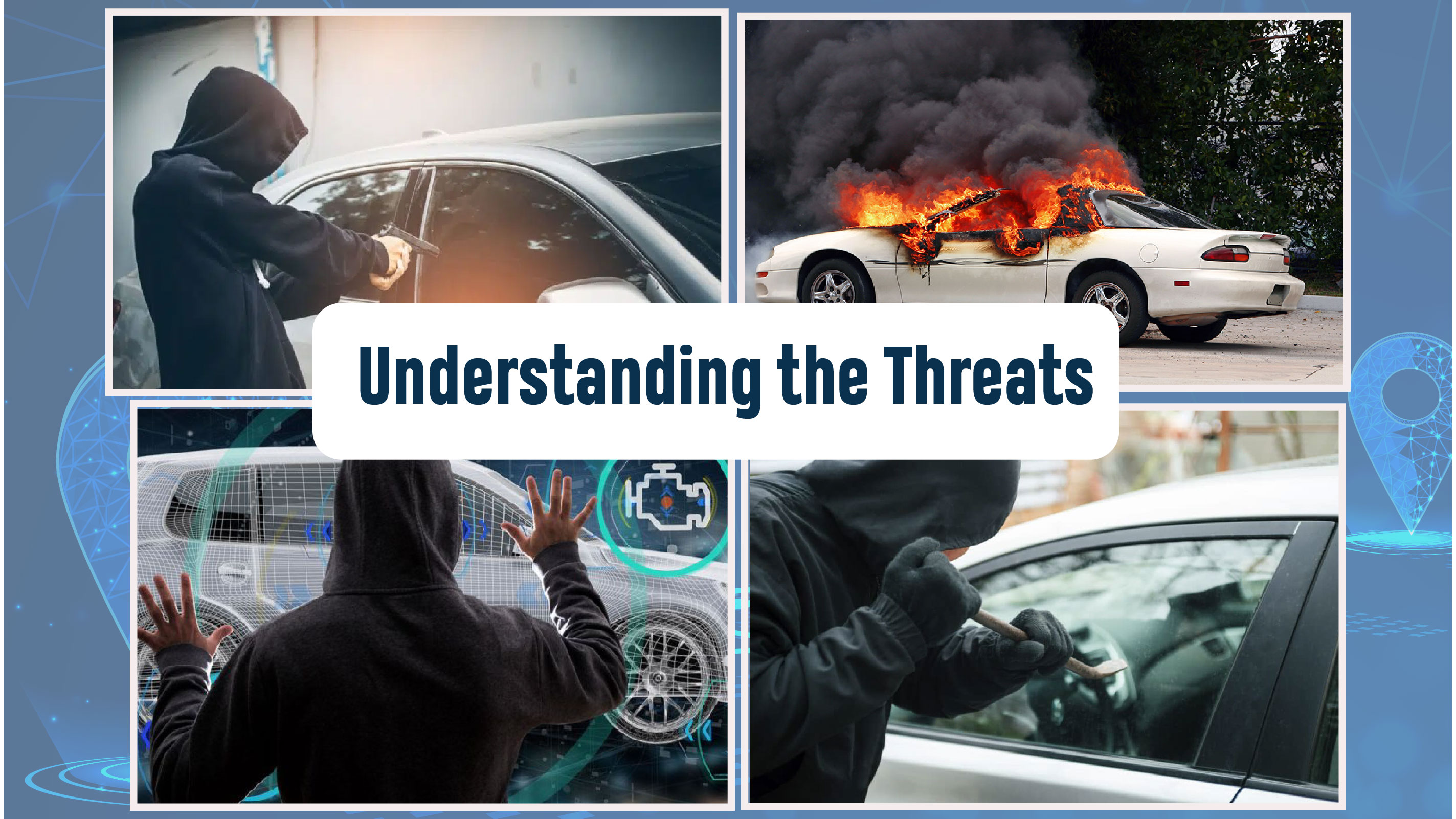
How Technology Can Mitigate These Risks
To protect against these threats, integrating advanced technologies into your vehicle security strategy is essential. Let’s explore how AI cameras, GPS devices, E-locks, and digital maps can help.

1. Advanced AI Cameras
AI-powered cameras are a game-changer in vehicle security. They offer real-time surveillance, continuously monitoring the vehicle’s surroundings and detecting suspicious activities. Here’s how they help:
- Real-Time Surveillance: AI cameras keep an eye on the vehicle at all times, detecting any unusual behavior or individuals approaching the vehicle.
- Behavior Analysis: AI algorithms can analyze patterns of movement or behavior, alerting drivers or security personnel to potential threats before they escalate.
- Facial and License Plate Recognition: These features help identify known criminals or unauthorized personnel and track suspicious vehicles that might be following or targeting your vehicle.
- Incident Recording: High-quality video evidence captured by AI cameras is crucial for investigations and insurance claims in the event of an attack or vandalism.
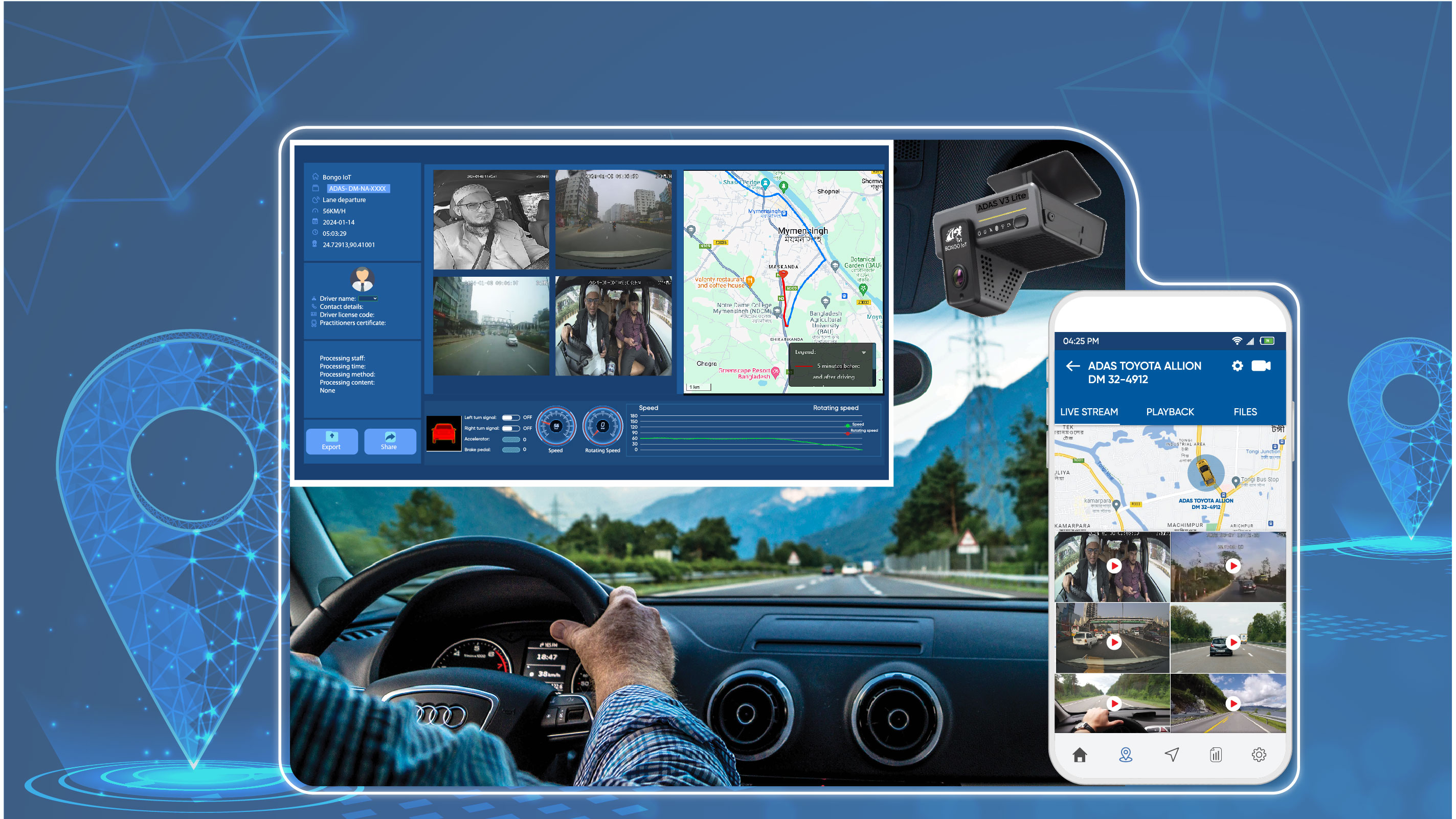
2. GPS Devices
GPS devices are vital for tracking and recovering vehicles in case of theft or hijacking. They also offer several other security benefits:
- Real-Time Tracking: Constant tracking allows you to know the exact location of your vehicle at all times, enabling quick recovery in case of theft.
- Geofencing: Setting up virtual boundaries around a vehicle’s route triggers alerts if the vehicle leaves the designated area, helping prevent unauthorized movement.
- Route Optimization: GPS can suggest the safest and most efficient routes, avoiding high-risk areas known for crime or vandalism.
- Speed Monitoring: Monitoring the vehicle’s speed ensures it isn’t being driven recklessly or diverted off course, which could indicate a hijacking or unauthorized use.
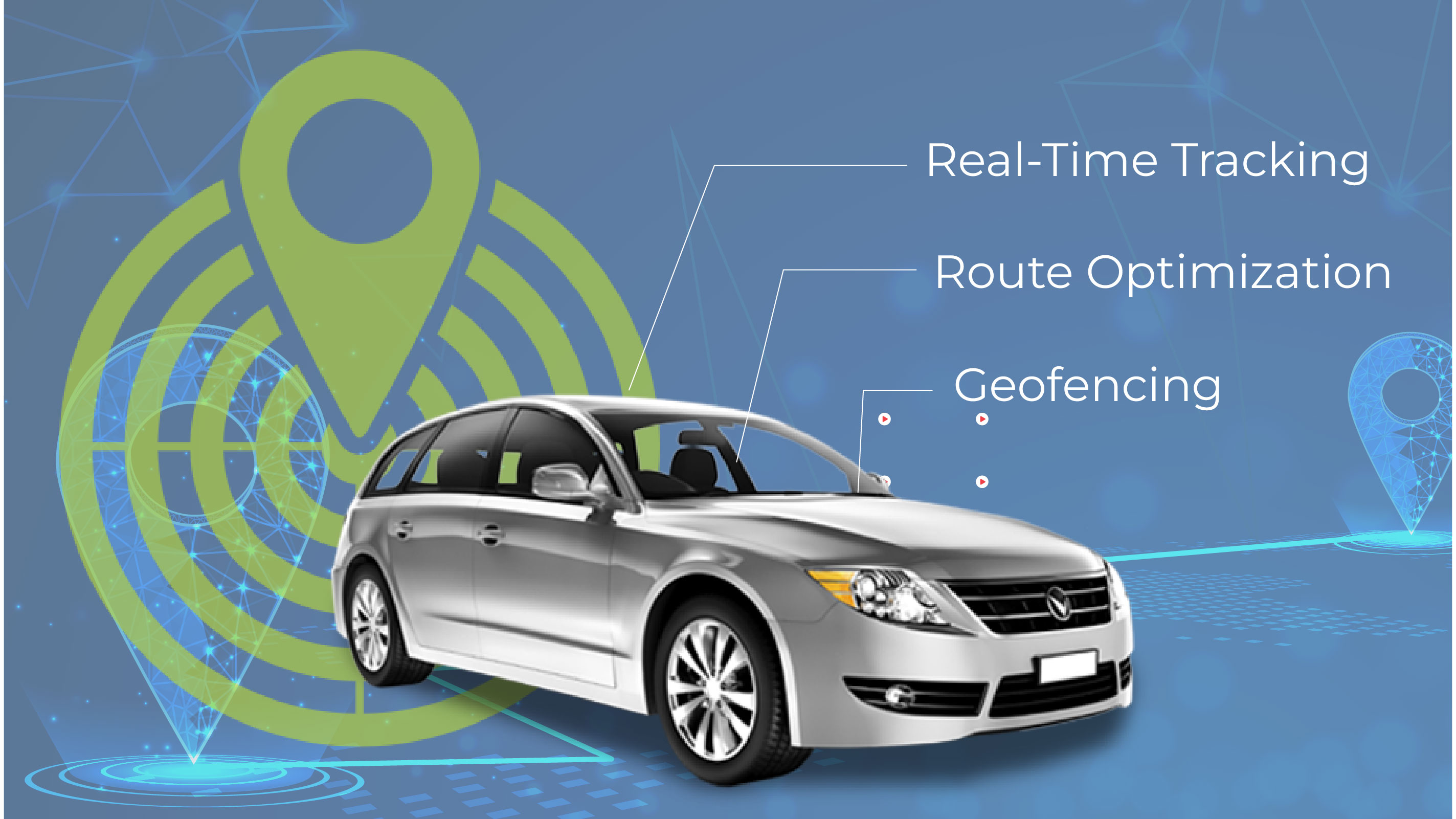
3. E-Locks (Electronic Locks)
E-locks provide enhanced security for both the vehicle and its cargo. Their features include:
- Remote Locking/Unlocking: Control the vehicle’s locks remotely to ensure it remains secure even if the driver is not present. In case of an attempted break-in, the vehicle can be locked down remotely.
- Access Control: Restrict access to the vehicle or cargo compartments to authorized personnel only, reducing the risk of theft or tampering.
- Tamper Alerts: If someone tries to forcefully open the lock, an alert is sent to the driver or fleet manager, allowing for immediate response.
- Audit Trail: E-locks maintain a record of all access attempts, providing valuable information in the event of a security breach.
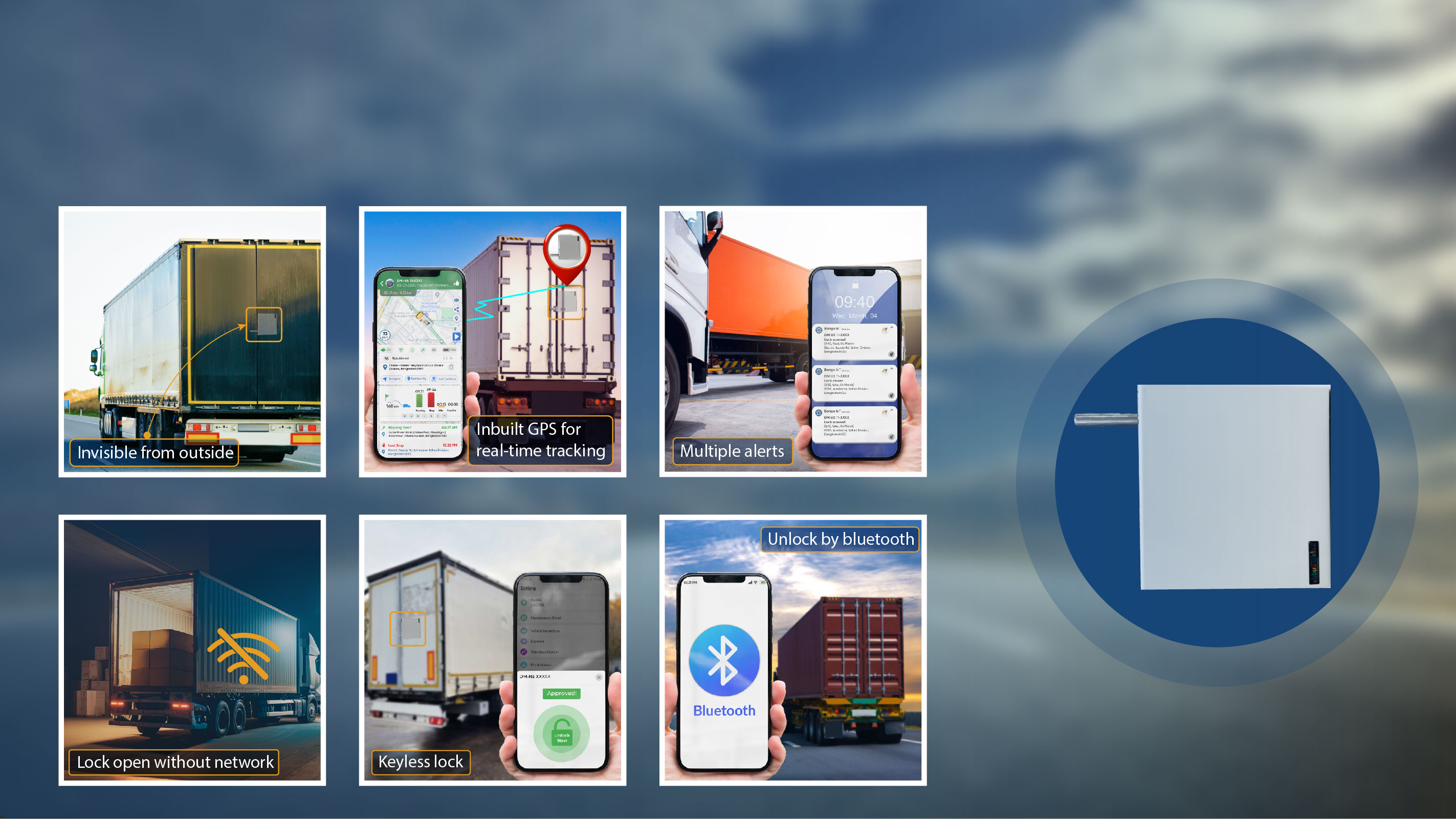
4. Digital Maps
Digital maps, especially when integrated with AI, provide real-time data to help drivers avoid dangerous areas and situations:
- Risk Zone Identification: Maps can be overlaid with data on crime hotspots or areas prone to vandalism, allowing drivers to avoid these locations.
- Dynamic Routing: In case of an emerging threat or roadblock, digital maps can reroute the vehicle to safer paths in real-time.
- Traffic and Incident Alerts: Receive live updates on traffic conditions or incidents, such as accidents or protests, that could pose a threat, allowing drivers to take preemptive action.
- AI Integration: AI-powered maps can predict potential risks based on historical data and suggest preventive measures, such as changing routes or increasing surveillance in certain areas.
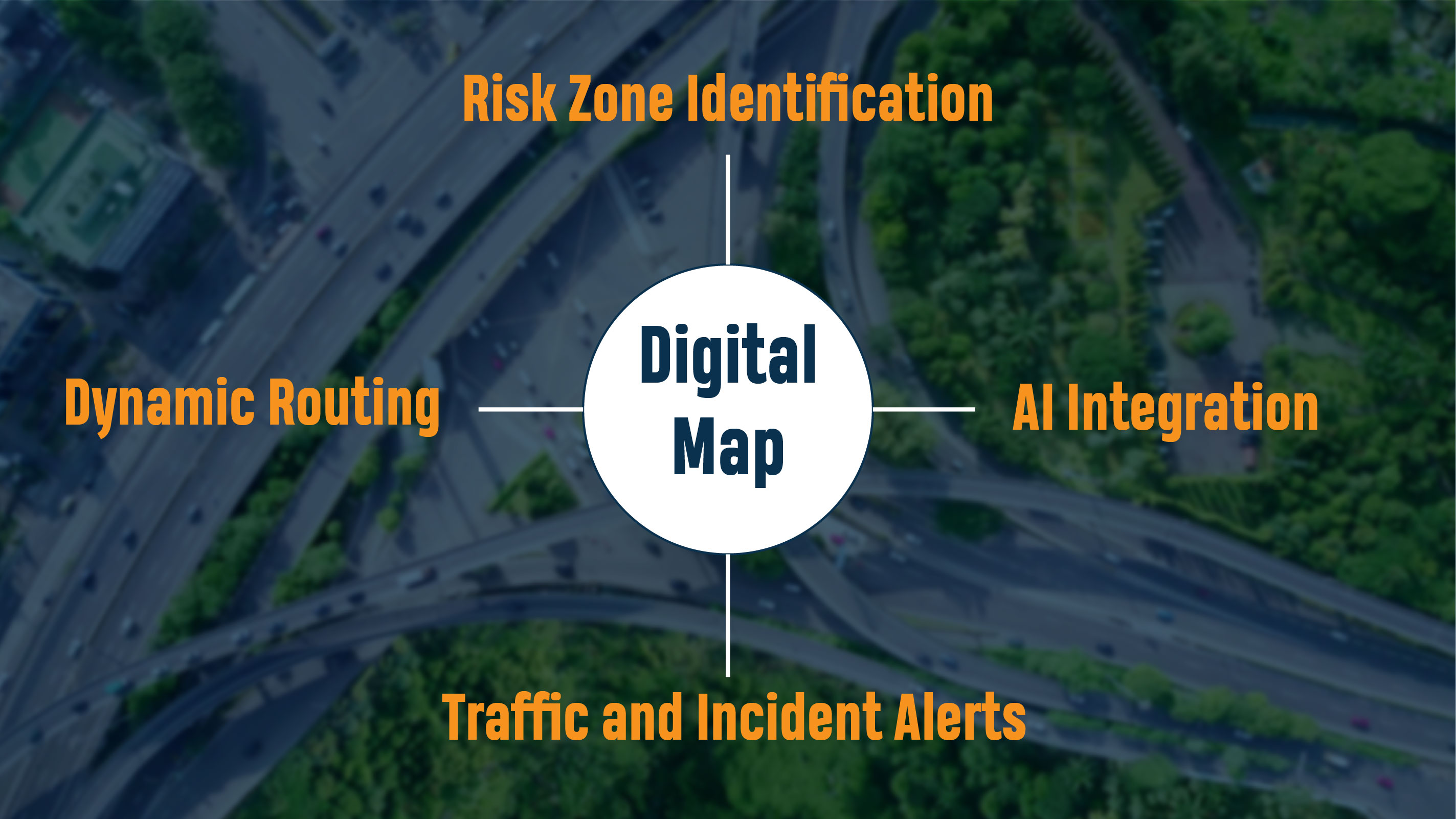
Creating a Robust Security Ecosystem
The true power of these technologies lies in their integration. When combined, they create a comprehensive security ecosystem that provides proactive threat detection, immediate response, and data-driven security enhancements:
- Proactive Threat Detection: AI cameras and GPS work together to detect and track potential threats in real time.
- Immediate Response: In case of a detected threat, E-locks can secure the vehicle, while GPS notifies authorities or fleet managers, enabling a swift response.
- Data-Driven Enhancements: The data collected from AI cameras, GPS devices, and digital maps can be analyzed to improve security protocols, such as identifying new risk zones or optimizing security measures for specific routes.
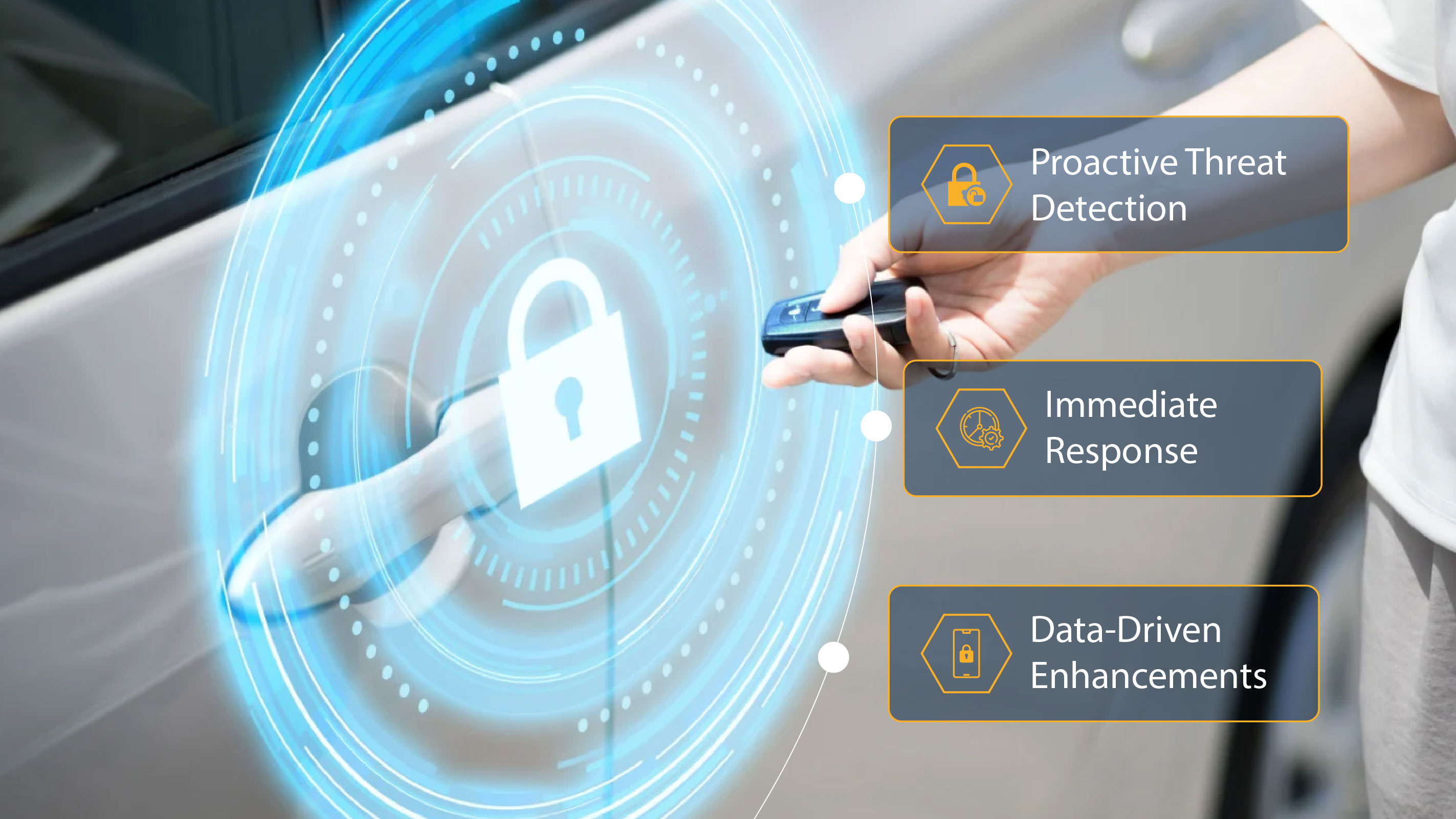
Conclusion
In an era where threats to vehicle and driver safety are becoming increasingly sophisticated, leveraging advanced technologies is essential. By integrating AI cameras, GPS devices, E-locks, and digital maps, you can create a robust security system that not only prevents potential threats but also provides quick recovery options in case an incident occurs.
Whether you’re managing a fleet or just looking to protect your personal vehicle, these technologies offer peace of mind, ensuring the safety of your vehicles, cargo, and, most importantly, the drivers on the road. Stay ahead of the threats and invest in the future of vehicle security today.
🌐Discover more
Visit at: https://www.bongoiot.com
WhatsApp: 01322813551
or,
Mail Us: sales@bongoiot.com

